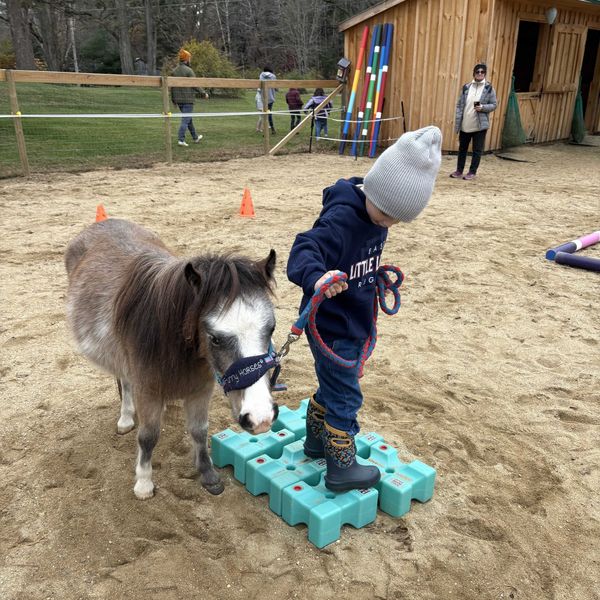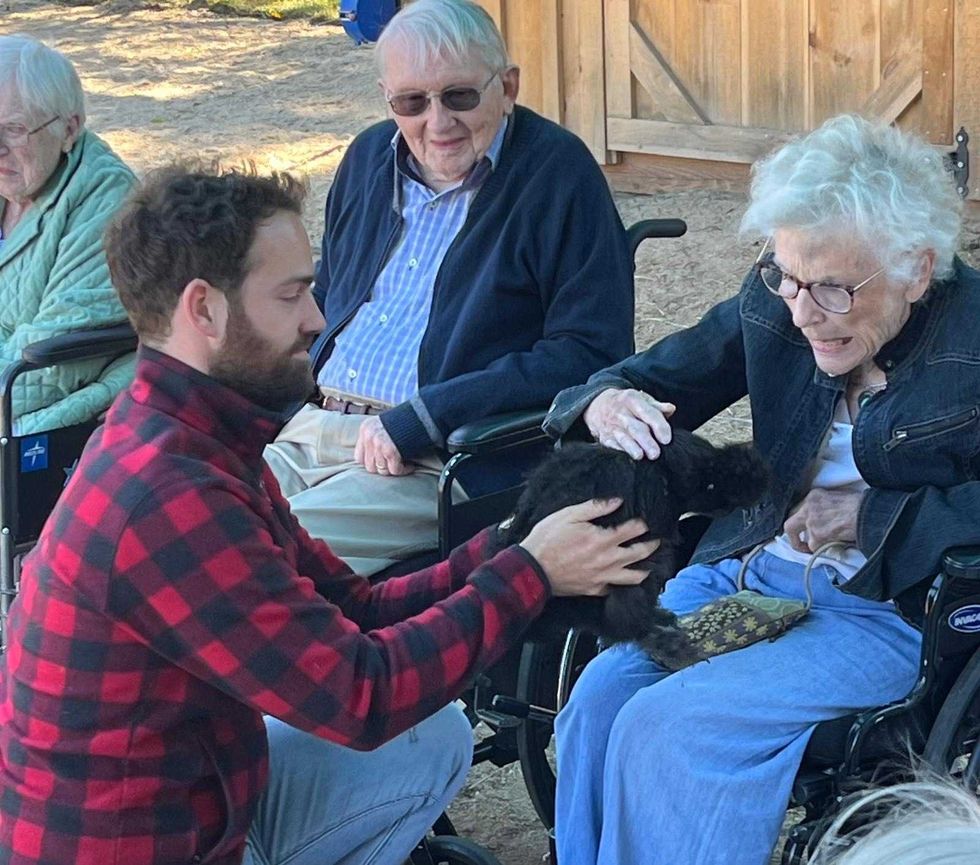Invasive species, infectious diseases and some new ticks in Litchfield County

Provided

When we hear ‘invasive species’ around here we think of Oriental Bittersweet strangling trees, Japanese Knotweed clogging riverbanks, Purple Loosestrife choking wetlands, and Emerald ash borer beetle decimating our ash trees. These are threats to our environment that are visible from almost every road, path or hiking trail across the northwest corner of Connecticut. These are introduced species that adapted to our local climate, out-competed our native flora and fauna, and occupied the ecological niche formerly home to local native species.
What is invisible from your car window as you pass across the region is another invasion, one with big health consequences. It is an invasion of infectious disease driven by arthropods that act as disease vectors arriving in our county from elsewhere. Some of the most closely watched arrivals are the new tick vectors that have spread to southern Connecticut in the last couple of years. Most of us are familiar with the black-legged deer tick which has been in Connecticut for millennia and transmits Lyme Disease, Anaplasma, Babesia and Powassan Virus in mice, birds, deer and humans. What few realize is that there are three new tick species that have arrived in the state enabled by the rising global temperatures, movement of host species carrying tick passengers, and human disruption of habitat allowing the new arrivals to become established.
Lone Star Tick, Gulf Coast Tick and Asian Longhorned Tick have all been detected as breeding populations in the southeastern part of Connecticut and if the black-legged tick’s rapid move north into Canada over the last 20 years is a guide, these new ticks can be expected to move northwards at 15-40 miles per year. They transmit a whole new selection of protozoa, bacteria and viruses: Rickettsia parkeri, Heartland Virus, Dabie Bandavirus, Tularemia, Southern Tick Associated Rash Illness, Bourbon Virus, Relapsing Fevers, Tick Borne Encephalitis and Rocky Mountain Spotted Fever to name a few. Some of these infections are often mild but some are more severe and some can be life-threatening. We are poorly prepared for these invaders with few diagnostic tests and not much in the way of treatment options, other than the fortunate efficacy of doxycycline, used widely for Lyme, against some of the new bacterial infections.
Ticks are not the only invasive arthropod vectors taking advantage of the changing climate and human-disrupted environments. Mosquitoes are also moving here. There have been Asian bush mosquitoes such as Aedes japonicus and A. albopictus spreading in the state for some years but the acceleration of warming will likely bring new invaders adapting to human-made habitat. The daytime human biter Aedes aegypti thrives in urban environments and its global spread has driven the explosion in Dengue Fever cases over the last couple of years. It is so well adapted to towns and cities that it can breed in the drops of condensation from an air conditioner. Viral infections like Yellow Fever, Dengue, Zika and Chikungunya are transmitted by Aedes species. Across Africa a new invasive malaria-carrying mosquito, Anopheles stephensi, is setting back hard won gains in malaria control. It’s another daytime biter that lives happily in towns and cities and is changing malaria from a rural infection of farms and villages to an urban plague like Dengue Fever. Could it invade here? Why not?
Global factors, mainly warming winter temperatures, are clearly driving these range expansions. To slow the spread of these invaders we need to slow the heating up of our planet by burning less fossil fuel and storing more carbon. But there are local factors too. Losses of native biodiversity due to human activity such as habitat fragmentation, intensive agriculture, and pollution open up habitat for invaders. Range expansion of new species is a natural process that happens in native ecosystems but it is reasonable to assume that an abundant and thriving mix of local species controls the expansion of newcomers through competition. We are losing these resilient ecosystems and the health consequences are unfolding as we watch.
According to Homegrown National Park [homegrownnationalpark.org] about 80% of U.S. land is privately held. A commitment to manage our property for native biodiversity will go a long way to restoring resilient habitat that can dilute the expansion of disease-carrying invaders. Certainly new infectious diseases will arrive in Litchfield County given the planetary changes already set in motion, but the level of impact they will have is still in our hands.
James Shepherd, Section of Infectious Disease at theYale University School of Medicine, lives on Smokedown Farm in Sharon.
“Once Upon a Time in America” features ten portraits by artist Katro Storm.
The Kearcher-Monsell Gallery at Housatonic Valley Regional High School in Falls Village is once again host to a wonderful student-curated exhibition. “Once Upon a Time in America,” ten portraits by New Haven artist Katro Storm, opened on Nov. 20 and will run through the end of the year.
“This is our first show of the year,” said senior student Alex Wilbur, the current head intern who oversees the student-run gallery. “I inherited the position last year from Elinor Wolgemuth. It’s been really amazing to take charge and see this through.”
Part of what became a capstone project for Wolgemuth, she left behind a comprehensive guide to help future student interns manage the gallery effectively. “Everything from who we should contact, the steps to take for everything, our donors,” Wilbur said. “It’s really extensive and it’s been a huge help.”
Art teacher Lilly Rand Barnett first met Storm a few years ago through his ICEHOUSE Project Space exhibition in Sharon, “Will It Grow in Sharon?” in which he planted cotton and tobacco as part of an exploration of ancestral heritage.
“And the plants did grow,” said Barnett. She asked Storm if her students could use them, and the resulting work became a project for that year’s Troutbeck Symposium, the annual student-led event in Amenia that uncovers little-known or under-told histories of marginalized communities, particularly BIPOC histories.
Last spring, Rand emailed to ask if Storm would consider a solo show at HVRHS. He agreed.
And just a few weeks ago, he arrived — paints, brushes and canvases in tow.
“When Katro came to start hanging everything, he took up a mini art residency in Ms. Rand’s room,” Wilbur said. “All her students were able to see his process and talk to him. It was great working with him.”
Perhaps more unexpected was his openness. “He really trusted us as curators and visionaries,” Wilbur said. “He said, ‘Do with it what you will.’”

Storm’s artistic training began at New Haven’s Educational Center for the Arts. His talent earned him a full scholarship to the Arts Institute of Boston, then Boston’s Museum School, where he painted seven oversized portraits of influential Black figures — in seven days — for his final project. Those works became the backbone of his early exhibitions, including at Howard University’s National Council for the Arts.
Storm has created several community murals like the 2009 READ Mural featuring local heroes, and several literacy and wellness murals at the Stetson Branch Library in New Haven. Today, he teaches and works, he said, “wherever I set up shop. Sometimes I go outside. Sometimes I’m on top of roofs. Wherever it is, I get the job done.”
His deep ties to education made a high school gallery an especially meaningful stop. “No one really knew who these people were except maybe John Lennon,” Storm said of the portraits in the show. “It’s really important for them to know James Baldwin and Shirley Chisholm. And now they do.”
The exhibition includes a wide list of subjects: James Baldwin, Shirley Chisholm, Redd Foxx, Jasper Johns, Marilyn Manson, William F. Buckley, Harold Hunter, John Lennon, as well as two deeply personal works — a portrait of Tracy Sherrod (“She’s a friend of mine… She had an interesting hairdo”) and a tribute to his late friend Nes Rivera. “Most of the time I choose my subjects because there are things I want to see,” Storm said.
Storm’s paintings, which he describes as “full frontal figuratism,” rely on drips, tonal shifts, and what feels like emerging depth. His process moves quickly. “It depends on how fast it needs to get done,” he said. “Sometimes I like to take the long way up the mountain. Instead of doing an outline, I just start coloring, blocking things off with light and dark until it starts to take shape.”
He’s currently in a black-and-white phase. “Right now, I’m inspired by black and white, the way I can really get contrast and depth.”
Work happens on multiple canvases at once. “Sometimes I’ll have five paintings going on at one time because I go through different moods, and then there’s the way the light hits,” he said. “It’s kind of like cooking. You’ve got a couple things going at once, a couple things cooking, and you just try to reach that deadline.”
For Wilbur, who has studied studio arts “ever since I was really young” and recently applied early decision to Vassar, the experience has been transformative. For Storm — an artist who built an early career painting seven portraits in seven days and has turned New York’s subway corridors into a makeshift museum — it has been another chance to merge artmaking with education, and to pass a torch to a new generation of curators.
Le Petit Ranch offers animal-assisted therapy and learning programs for children and seniors in Sheffield.
Le Petit Ranch, a nonprofit offering animal-assisted therapy and learning programs, opened in April at 147 Bears Den Road in Sheffield. Founded by Marjorie Borreda, the center provides programs for children, families and seniors using miniature horses, rescued greyhounds, guinea pigs and chickens.
Borreda, who moved to Sheffield with her husband, Mitch Moulton, and their two children to be closer to his family, has transformed her longtime love of animals into her career. She completed certifications in animal-assisted therapy and coaching in 2023, along with coursework in psychiatry, psychology, literacy and veterinary skills.
Le Petit Ranch operates out of two small structures next to the family’s home: a one-room schoolhouse for animal-assisted learning sessions and a compact stable for the three miniature horses, Mini Mac, Rocket and Miso. Other partner animals include two rescued Spanish greyhounds, Yayi and Ronya; four guinea pigs and a flock of chickens.
Borreda offers programs at the Scoville Library in Salisbury, at Salisbury Central School and surrounding towns to support those who benefit from non-traditional learning environments.
“Animal-assisted education partners with animals to support learning in math, reading, writing, language and physical education,” she said. One activity, equimotricité, has children lead miniature horses through obstacle courses to build autonomy, confidence and motor skills.

She also brings her greyhounds into schools for a “min vet clinic,” a workshop that turns lessons on dog biology and measuring skills into hands-on, movement-based learning. A separate dog-bite prevention workshop teaches children how to read canine body language and respond calmly.
Parents and teachers report strong results. More than 90% of parents observed greater empathy, reduced anxiety, increased self-confidence and improved communication and cooperation in their children, and every parent said animal-assisted education made school more enjoyable — with many calling it “the highlight of their week.”

Le Petit Ranch also serves seniors, including nursing home residents experiencing depression, social withdrawal or reduced physical activity. Weekly small-group sessions with animals can stimulate cognitive function and improve motor skills, balance and mobility.
Families can visit Le Petit Ranch for animal- assisted afterschool sessions, Frech immersion or family walks. She also offers programs for schools, libraries, community centers, churches, senior centers and nursing homes.
For more information, email info@lepetitranch.com, visit lepetitranch.com, follow @le.petit.ranch on Instagram or call 413-200-8081.